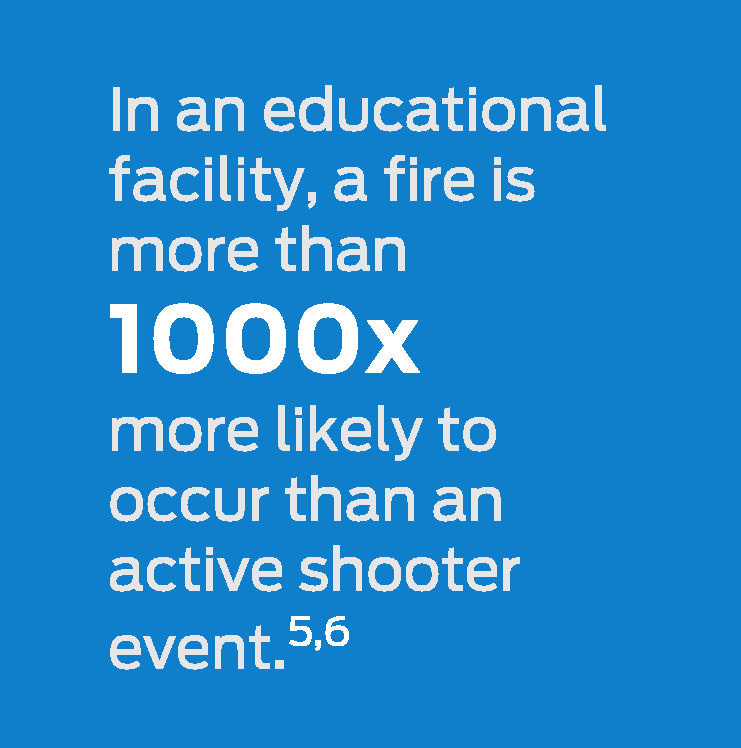 On Monday, I shared a document from the Partner Alliance for Safer Schools (PASS), regarding the potential dangers associated with classroom barricade devices. This document included a statistic that prompted a quick question:
On Monday, I shared a document from the Partner Alliance for Safer Schools (PASS), regarding the potential dangers associated with classroom barricade devices. This document included a statistic that prompted a quick question:
How can a fire be 1000 times more likely to occur in a school than an active shooter event? I read about school shootings all the time, and I never hear about fires in schools.
I’m really glad this question was asked. I will explain where the numbers came from, and I welcome your comments. Every school shooting is tragic, and anything possible should be done to protect our students and teachers. I have many other posts addressing other aspects of school security and safety, but in this post I am focusing only on the numbers used in the PASS calculation.
There are many sets of statistics with regard to gun violence in schools, with different criteria for the types of events that are included. Some statistics include suicides, targeted shootings, accidental discharges of weapons, and gunfire in the parking lot, for example. Because the focus here is physical security, and specifically the protection provided by locks on classroom doors, the FBI’s statistics on active shooter events were used. A locked classroom door may not have an effect on suicides, targeted shootings, accidental discharges, and gunfire outside of the building, but it could have a profound effect during an active shooter event. Therefore, PASS considered the FBI data the most appropriate to use for this comparison.
The FBI has published data on active-shooter incidents from 2000 to 2023. To ensure that the calculation reflected the current state of school security, the data from 2010 to 2020 was used (view spreadsheet here).
From the FBI Reports: “The agreed-upon definition of an active shooter by U.S. government agencies — including the White House, U.S. Department of Justice/FBI, U.S. Department of Education, and U.S. Department of Homeland Security/Federal Emergency Management Agency — is ‘an individual actively engaged in killing or attempting to kill people in a confined and populated area,’ Implicit in this definition is that the subject’s criminal actions involve the use of firearms.”
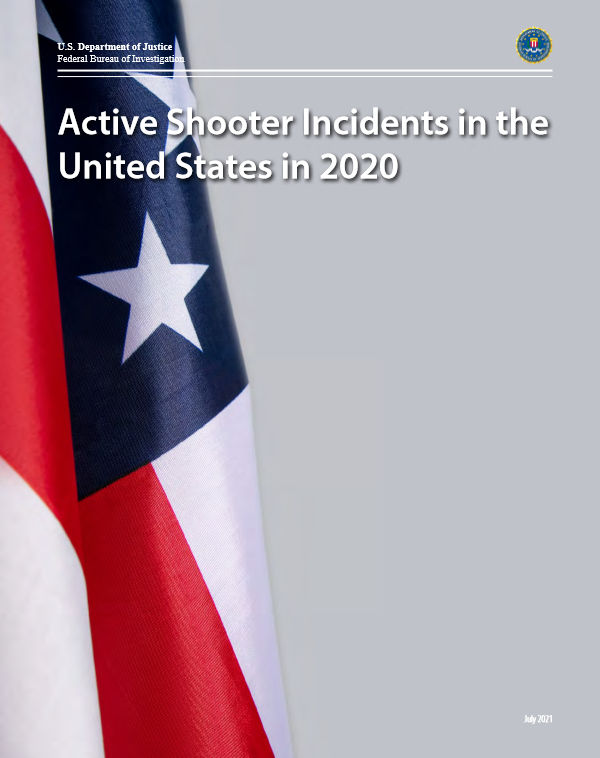 According to the FBI reports, the numbers of active shooter events in all educational buildings between 2010 and 2020 are:
According to the FBI reports, the numbers of active shooter events in all educational buildings between 2010 and 2020 are:
- 2010 – 6 (report 2000-2013)
- 2011 – 1 (report 2000-2013)
- 2012 – 5 (report 2000-2013)
- 2013 – 5 (report 2000-2013)
- 2014 – 5 (report 2014-2015)
- 2015 – 1 (report 2014-2015)
- 2016 – 3 (report 2016-2017)
- 2017 – 4 (report 2016-2017)
- 2018 – 5 (report 2018)
- 2019 – 3 (report 2019)
- 2020 – 0 (report 2020)
- 2021 – 2 (report 2021)
- 2022 – 4 (report 2022)
- 2023 – 3 (report 2023)
- 2024 – 4 (report 2024)
This is a total of 51 active shooter events in educational buildings over a period of 15 years, or an average of 3.4 events per year.
~~~
It is commonly stated that “school fires don’t happen any more,” but that’s not the case. Although the last US school fire with a high loss of life occurred in 1958, this doesn’t mean that there are no fires in schools. It means that because of code changes and strong enforcement, the school fires that do occur rarely result in fatalities.
So how many fires occur in educational buildings each year? According to the National Fire Protection Association (NFPA), between 2015 and 2019 each year saw an average of 4,677 fires in educational occupancies. Between 2011 and 2015, NFPA reported an average of 4,980 fires in educational properties per year. Taking an average for the period from 2010 to 2020, we can conservatively estimate that approximately 4,800 fires occurred in schools and other education facilities each year.
~~~
If there are 4,800 fires (average) in educational occupancies each year, and an average of 4 active shooter events in schools per year (rounded up from 3.4), the calculation to compare the likelihood of each type of event happening is 4,800 fires / 4 active shooter events = 1,200.
According to these figures, it is 1,200 times more likely that a fire will occur in a particular school than an active shooter event. This demonstrates why it is important to consider fire protection, life safety, and egress IN ADDITION TO security in schools.
Any questions?
You need to login or register to bookmark/favorite this content.

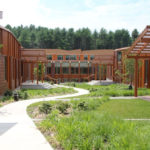
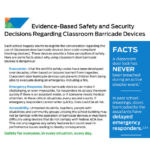
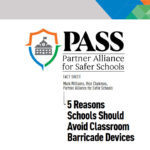
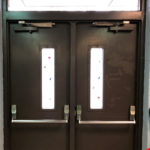

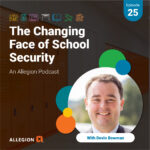
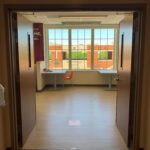

Lori,
Thank You for bringing these statistics to another important group that Fire Departments across the country do not have great access to, The Door Hardware Industry. While I see the great importance you put on fire safety on a daily basis, the school communities as well as our local governments take a lot of our safety message energy/training time. PLEASE keep up the GREAT work you and the Hardware Industry do to back up our messages on fire safety in our communities.
I will keep talking about it until someone pulls the plug, Kevin! 😀
– Lori
Hi Lori. It’s good to consider the best argument on the opposing side to understand their point of view. Are we concerned about reducing the number of incidents, or loss of life and serious injury? I think we can all agree it’s the latter. Sandy Hook 2012 resulted in 26 deaths in a single incident. There are many parallels between the active shooter and fire: prevention, detection, evacuation and suppression to name a few. We need to be developing and promoting complete solutions. The door hardware discussion has been focused on the efficacy and risks of a non-solution -the barricade device- for way too long.
As always, my 2 cents
I always love to hear your 2 cents’ worth, Lloyd! 🙂
– Lori
As a locksmith at a university I spent fifteen years trying to get this fact through the heads of the administration. I don’t think it ever sunk in.
I’m still hopeful.
– Lori
None of these people have seen a lab demonstration go WRONG! I remember a high school instructor dropped a pea sized piece of sodium into WARM water! Another time, I had a teacher demonstrate the thermite reaction and failed to have enough sand under the crucible when the molten iron flowed out the bottom! There were no injuries, and a new ceramic table top to replace the “scorched” one, but still……!
I think it is important to note that this speaks to educational occupancies (K-12) and thus it ignores most of Higher Ed. Most of my academic buildings are B occupancies and the res halls are Group R. My sense is that there are more fires on college campuses to further enlarge the ratio of events.
Hi Rick –
It’s hard to get the stats to match up exactly, which is partially why the number was rounded down – 1000x instead of 1200x. But both the FBI numbers and NFPA numbers do include higher education. For example, the NFPA stats for 2015-2019 show the following averages per year: 3,161 fires in preschool through grade 12, 622 fires in adult education or college classrooms, 523 fires in day care facilities, and 372 unclassified or unknown-type public education properties. It wouldn’t include the dorms, and I think that’s ok if we’re comparing to active shooter events that affect classrooms. The spreadsheet showing the FBI stats includes higher ed as well as K-12 schools, with 10 active shooter events in higher ed, 27 in K-12 schools, and 1 at a school board meeting.
– Lori